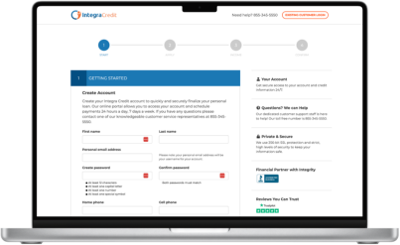In 1938, Congress passed the Fair Labor Standards Act (FLSA) and a national minimum wage to provide a standard of living to protect the well-being and health of American workers. Today, over 143 million American workers are covered by the FLSA enforced by the Wage and Hour Division of the U.S. Department of Labor. Let’s explore the federal minimum wage and which state has the highest minimum wage.
Key Takeaways
- The Fair Labor Standards Act mandates employers pay workers a federal minimum wage of $7.25 per hour.
- The state of Washington has the highest minimum wage rate at $15.74.
- There are special exceptions where the minimum wage rate may not apply.
What Is the Federal Minimum Wage?
The federal minimum wage in the U.S. is $7.25 per hour for workers. If you receive tips, your minimum wage is $2.13 per hour. However, your tips plus the $2.13 must be at least $7.25 an hour. If not, the employer must make up the difference. Certain states have specific laws designed for tipped employees.
How Much Is the Minimum Wage in Each State?
While the Federal minimum wage is $7.25, every state can set its wage as long as it’s at least at the federal level. According to the Department of Labor, the minimum wage for each of the 50 states and District of Columbia is provided below:
- Alabama — Doesn’t have a state minimum wage.
- Alaska — $10.85
- Arizona — $13.85
- Arkansas — $11.00
- California — $15.50
- Colorado — $13.65
- Connecticut — $15.00
- Delaware — $11.75
- Florida — $12.00
- Georgia — $5.15
- Hawaii — $12.00
- Idaho —$7.25
- Illinois — $13.00
- Indiana — $7.25
- Iowa — $7.25
- Kansas — $7.25
- Kentucky — $7.25
- Louisiana — Doesn’t have a state minimum wage.
- Maine — $13.80
- Maryland — $13.25 for employers with 15 or more employees and $12.80 for employers with fewer than 15 employees. The state minimum wage for Maryland will increase to $15.00 on January 1, 2024, for all employers, regardless of size.
- Massachusetts — $15.00
- Michigan — $10.10
- Minnesota — $10.59 for large employers with annual revenues of $500k or more, and $8.63 for smaller employers with revenues less than $500k.
- Missouri —$12.00
- Mississippi — Doesn’t have a state minimum wage.
- Montana — $9.95
- North Carolina — $7.25
- North Dakota — $7.25
- Nebraska — $10.50
- New Hampshire — $7.25
- New Jersey — $14.13
- New Mexico — $12.00
- Nevada — $11.25 if health insurance isn’t offered by the employer, and $10.25 if health insurance is offered.
- New York — $15.00 for NYC, Long Island, and Westchester, but $14.20 for the rest of the state.
- Ohio — $10.10 with a .35 cents an hour increase on January 1, 2024, to $10.45
- Oklahoma — $7.25
- Oregon — $14.20
- Pennsylvania — $7.25
- Rhode Island — $13.00
- South Carolina — Doesn’t have a state minimum wage.
- South Dakota — $10.80
- Tennessee — Doesn’t have a state minimum wage.
- Texas — $7.25
- Utah — $7.25
- Virginia — $12.00
- Vermont — $13.18
- Washington — $15.74
- Wisconsin — $7.25
- West Virginia — $8.75
- Wyoming — $5.15
- District of Columbia — $17.00
States with the Highest Minimum Wage in 2023
While the federal minimum wage is $7.25, many states guarantee workers significantly more. The top 10 states with the highest minimum wage are listed below:
- Washington — $15.74
- California — $15.50
- Massachusetts — $15.00
- Connecticut — $15.00
- New York — $14.20
- Oregon — $14.20
- New Jersey —$14.13
- Arizona — 13.85
- Maine — $13.80
- Colorado —13.65
Which State Has the Highest Minimum Wage?
Washington is the state with the highest minimum wage. However, that’s not the highest minimum wage rate in the U.S. That honor belongs to Washington D.C. As the capital city and federal district of the United States, Washington D.C. has the highest rate in the country at $17.00 per hour.
Which State Has the Lowest Minimum Wage?
Five different states do not have a minimum wage:
- Mississippi
- Louisiana
- Alabama
- Tennessee
- South Carolina
Because of this, the minimum wage rate in these five states defaults to the federally mandated rate of $7.25. Two states have a minimum wage that is below the federally mandated rate of $7.25:
- Wyoming
- Georgia
While Georgia and Wyoming have minimum wage rates of $5.15 per hour, the federal government’s FLSA supersedes the state wage. As a result, the minimum wage rate for workers in Georgia and Wyoming defaults to the federal rate of $7.25.
Does the Federal Minimum Wage Rate Automatically Increase?
The FLSA was signed into law back in 1938 by President Franklin D. Roosevelt at .25 cents per hour. Over time, the rate has evolved and increased to today’s $7.25. During this time, periodic increases have occurred due to inflation. Even though the FLSA is an evolving document, it doesn’t automatically include periodic increases in the minimum wage rate.
Are Certain Employees Exempt from the Minimum Wage?
Congress has exempted certain employees from the minimum wage provisions, including:
- Full-time students
- Workers with disabilities
- Youth under the age of 20 in their first 90 days of employment
- Tipped employees
- Student learners
What Is the Minimum Wage for Tipped Workers?
The minimum direct wage paid by employers to tipped workers can’t be less than $2.13 per hour. However, the amount paid by the employer plus the worker’s tips must add up to the minimum wage. If it doesn’t, the employer has to make up the difference.
What Is the Minimum Wage for Workers Under 20?
Workers under 20 have a minimum wage of $4.25 per hour during their first 90 days of employment — as long as the work doesn’t displace other workers. After 90 days or if the employee reaches the age of 20, they must begin earning the federal minimum wage of $7.25 an hour.
What Is the Minimum Wage for Full-Time Students?
The Full-Time Student Program is designed for full-time students employed at colleges, universities, agriculture, retail, or service stores. Full-time students hired by employers with a certificate from the Department of Labor are not to be paid less than 85% of the federal minimum wage. However, the Full-Time Student Program has specific restrictions and limitations:
- The student can’t work more than 8 hours in a day;
- The student can’t work more than 20 hours a week when school is in session;
- When school is out, the student can work up to 40 hours; and
- The employer must adhere to all child labor laws.
After the student graduates from or leaves school, they must earn the federal minimum wage of $7.25 an hour.
How Much Is Minimum Wage for Student Learners?
The student learner program is for high school students enrolled in vocational courses who are at least 16 years of age. Employers who hire these students can qualify for a special certificate from the Department of Labor. This certificate allows the employer to pay the student no less than 75% of the federal minimum wage as long as the student remains in the vocational education program.
The Bottom Line
The federal minimum wage rate provides American workers with income to meet their essential needs. Fortunately, many states mandate employers to pay substantially more than the minimum wage rate established in 2009. Washington D.C. and 30 states have adopted minimum wage rates higher than the federal rate. On the other hand, five states, including Tennessee, South Carolina, Mississippi, Louisiana, and Alabama do not have a minimum wage rate, while Wyoming and Georgia have a minimum wage of less than $7.25. In each of these instances, workers are defaulted to the federal rate.
Apply in minutes, quickly & securely
- Complete an online application
- Receive a decision quickly
- Review and sign the agreement
- Get cash directly into your bank account





